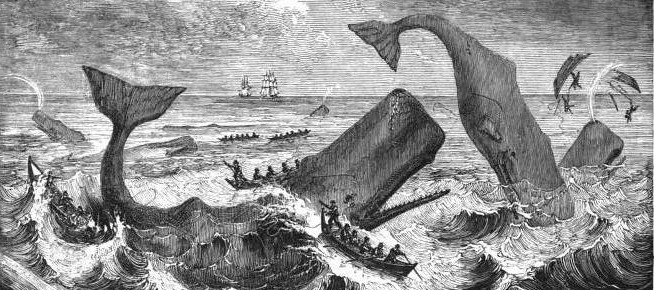Relating to our last blog post “‘Walking Whales’ in the Wadi Al-Hitan,” touching on the ancient evolutionary predecessors of modern whales, we’ve updated our Glossary to reflect on the reference to the Basilosaurus (aka Zeuglodon, Hydrarchos) fossil unearthed in America in the mid-nineteenth century, embedded in the following passage from Chapter 104 of Moby-Dick, “The Fossil Whale”:
But by far the most wonderful of all cetacean relics was the almost complete vast skeleton of an extinct monster, found in the year 1842, on the plantation of Judge Creagh, in Alabama. The awe-stricken credulous slaves in the vicinity took it for the bones of the fallen angels. The Alabama doctors declared it a huge reptile, and bestowed upon it the name of Basilosaurus. But some specimen bones of it being taken across the sea to Owen, the English Anatomist, it turned out that the alleged reptile was a whale, though of a departed species. A significant illustration of the face, again and again, repeated in this book, the the skeleton of a whale furnishes but little clue to the shape of his fully invested body. So Owen rechristened the monster Zeuglodon; and in his paper read before the London Geological Society, pronounced it, in substance, one of the most extraordinary creatures which the mutations of the globe have blotted out of existence.
Ishmael’s report on the curious history of this “most wonderful of all cetacean relics” is not the most accurate, so we invite you to read the fruits of our research on the subject here.

“Sketch of a Basilosaurus skeleton.” Image credit: Smithsonian Institute, National Museum of Natural History
